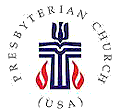Wear Sunscreen.
If I could offer you only one tip for the future, sunscreen would be it[i].
20 years ago, this spoken word piece by Baz Luhrmann dominated the radio waves as tassels were hung and mortarboards tossed. The original text came from a 1997 article in the Chicago Tribune by Mary Schimich, titled “Advice, like youth, probably just wasted on the young.” It was Schimich’s take on what she would say in a commencement speech if she were asked to give one, saying things like:
Don’t worry about the future or worry, but know that worrying is as effective as trying to solve an algebra problem by chewing bubblegum. The real troubles in your life are apt to be things that never crossed your worried mind – the kind that blindside you at 4 pm on some idle Tuesday. . .
[and]
Accept certain inalienable truths
Prices will rise
Politicians will philander
You too will get old, and when you do you’ll fantasize that when you were young
Prices were reasonable
Politicians were noble
And children respected their elders.
Respect your elders[ii].
Both the article and lyrics are rich with poignant advice about growing older, laced with nostalgia and sort of a shaking head wisdom that youth are rarely going to heed such advice, but the speaker will give it anyway. This time of year, you may even listen to such a commencement address, or at least hear snippets and quotes here and there of what famous speakers are offering to the next generation of graduates. And sometimes, as Morehouse College graduates recently learned, these speeches can bring quite the big pay-off[iii].
Our text for today is a final address, given by Jesus at the end of Luke’s gospel. Chances are, though, if you’re asked for Jesus’ final words to his disciples, you’ll likely turn to the end of Matthew’s gospel, that Great Commission:
19 Go therefore and make disciples of all nations, baptizing them in the name of the Father and of the Son and of the Holy Spirit, 20 and teaching them to obey everything that I have commanded you. And remember, I am with you always, to the end of the age.[iv]
It’s a great send-off, right? Clear and concise instructions; a roadmap for how to be disciples.
Luke’s account, on the other hand, is frankly less memorable. It follows classic stories of Post-Resurrection appearances, notably the revelation of the risen Lord on the road to Emmaus. Our text for today is sort of tucked into the end, offering a bookend of Luke’s gospel before the transition into the second part of the evangelist’s narrative in the book of Acts. In this story we encounter the story of Jesus’ Ascension. It is a day marked on the liturgical calendar 40 days after Easter (which, in case you weren’t keeping count, was this past Thursday). For Luke, the Ascension is a key marker to connect the story of Jesus as the promises from the Hebrew scriptures fulfilled. It also serves to identify Jesus as a prophet, one who reveals an understanding of God’s word, and is indeed swept up into a cloud like Elijah. The symbolism would not have been lost on the audience in the first century. Like those around the table in Emmaus, their eyes would have been opened and they would have recognized Jesus as the Messiah. But, if Matthew’s Great Commission is the penultimate commencement address, what do we make of Luke’s parallel? I’d offer this morning that Luke’s gospel has Jesus giving an elevator speech.
Are you familiar with the phrase?
An elevator speech is a clear, brief message or “commercial” about you. It communicates who you are, what you’re looking for and how you can benefit a company or organization. It’s typically about 30 seconds, the time it takes people to ride from the top to the bottom of a building in an elevator. (The idea behind having an elevator speech is that you are prepared to share this information with anyone, at anytime, even in an elevator.) . . . This elevator speech is: •absolutely not longer than 25 to 30 seconds •or – in words – approximately 80 to 90 words •or – in sentences – 8 to 10 sentences[v].
The American Library Association notes that:
An elevator speech [is] a message intended to spur decision makers to action. An elevator speech must be short, specific, and memorable. It is important to have your elevator speech rehearsed and ready because you never know when you’ll have an opportunity to use it![vi]
I would offer that in his final moments with his disciples, with the “elevator going up” if you’ll allow it, that Jesus maximized his final moments in this style in order to inspire his disciples into action. The ALA goes on further to give a guide for crafting such a speech, one we see reflected in Luke’s gospel account.
First, the message; what do you need your audience to know. This is where our text begins today, as Jesus opens their minds to the entirety of the Scriptures. Ok, so it’s a pretty big message, but the key here I think is that, echoing the experience on the Emmaus road, the disciples begin to understand what is going on, something that is radically new to their experience of discipleship. Light bulbs begin to go off, and we might imagine them nodding along, perhaps for the first time with a glimmer of understanding about what all of this means.
Second, the story and key data; connect the message specifically to your work, with a quick fact/data and story. Jesus gets to the point with a recap of the resurrection, and perhaps most importantly, the good news of the forgiveness of sins that should be proclaimed. The bottom line according to Jesus? Grace.
Third, the ALA would have you make an Ask; consider who you are talking to, what they care about, and what it is within their power to impact. Make a specific request. Jesus names those gathered as “witnesses to these things.” He promises them that the power of the Holy Spirit is coming to enable them to do this work, and instructs them to wait for it (spoiler alert- they only have to wait about 10 days – we’ll get there next Sunday on Pentecost). And when the time comes, they are to proclaim this good news to all nations, beginning from Jerusalem.
There you have it – an elevator speech – short, personal, and memorable. As William Herzog II notes:
Up to this point Luke has been concerned with reinterpreting the Scriptures in the light of Jesus. Now his focus shifts to the outcome of Jesus’ ministry – the mission that the disciples will conduct in his name . . . The blessing occurs in Bethany. It is as though the risen Lord took the disciples to the trail head that would lead to the Gentile mission.
In this speech, Jesus reminds the disciples, after all that has happened, about what really matters, so that they might grab hold of it and continue his mission.
In the Roald Dahl classic book, Charlie and the Chocolate Factory, the candyman Willy Wonka takes some of the characters in a magical glass elevator. He explains that this is no ordinary elevator – it can go any direction the heart desires. At the very end of the book, when only Charlie and Grandpa Joe are left, the elevator breaks through the ceiling of the Chocolate Factory, giving them a view of the entire factory and city. From the sky, things can appear clearer. Wonka asks Charlie if he liked all that he has seen and experienced with him, and Charlie enthusiastically agrees. Then, the big reveal comes: Charlie is going to be Wonka’s successor. Everything will belong to him, and he will carry on what Wonka began. Big things can happen on an elevator ride.
In these final verses in Luke’s gospel, Jesus takes his disciples up in the elevator, and then opens the doors for them to go out into the world. Because that’s what you do when the elevator ride ends. You get off at your floor! And, if the elevator speech has been done well, it will impact the steps you take next. Perhaps that’s why Jesus had to ascend; so that the disciples would start making connections on their own, living out the faith he had shown them, rather than just following along somewhat mindlessly and clueless. Here, Jesus is inviting them to continue exhibiting the reign of God in the world. It’s quite the offer, isn’t it?
It came to the disciples long ago, and it comes to us today. As those who have heard the good news and experienced the presence of Christ, what would we share with others on an elevator ride? Would we dare to share the gospel? May it be so. Amen.
sermon preached by Rev. Elizabeth Lovell Milford
Heritage Presbyterian Church, June 2, 2019
————————————————————————————————————————————————–
[i] “Everybody’s Free (to Wear Sunscreen)” by Baz Luhrmann
[ii] Ibid.
[iii] https://www.ajc.com/news/just-morehouse-commencement-speaker-pay-off-class-2019-student-loans/XvMHlS1SVyJiG3mRp1WOWL/
[iv] Matthew 28:19-20, New Revised Standard Version
[v] http://sfp.ucdavis.edu/files/163926.pdf
[vi] http://www.ala.org/advocacy/advocacy-university/school-library-resources/elevator-speech

